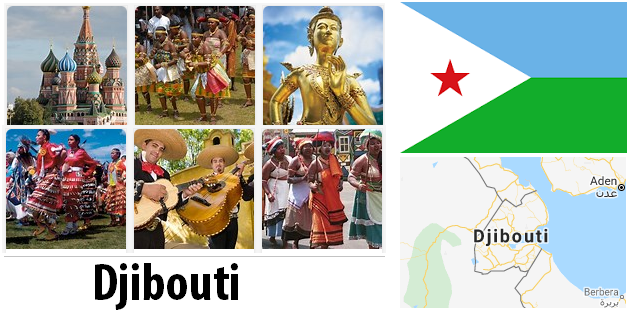The name Botswana is derived from the Tswana people who live in the country Botswana represents the majority of the population.
Botswana is often referred to as the model country of Africa, because since its independence in 1966 it has had a free and democratic basic order and a government legitimized by regular elections. This stability makes Botswana a very popular holiday destination in southern Africa. The annual economic growth Botswana is regularly the highest of all African countries. This enormous growth is based on diamond exports, which, thanks to the discovery of three of the richest diamond mines in the world, made Botswana the world’s largest producer of jewelry diamonds shortly after independence was declared.
The country between Namibia, Zambia, Zimbabwe and South Africa is characterized by two fascinating contrasts. On the one hand, Botswana consists of 80 percent Kalahari Desert to the other, the approximately 15,000 sq km Okavango Basin offers hundreds of animal species, a lot of forest and countless small waterways that eventually become lagoons. Especially during the rainy season, you can marvel at a unique flora and fauna on trips and safaris.
The official language in Botswana is English. Also Setswana, the mother tongue of most locals, is an official language and is used in many offices. Botswana therefore has two official languages, English and Setswan. Most newspapers are published in English. English is also the official language in Parliament. The children learn English in theschool. In contrast, setswana is mainly spoken on the street. Most Botswana residents actually understand and speak both languages. By the way, Setswana is a Banut language that is taught at primary school.
Area: 581,730 km² (source CIA). Land: 566,730 km², water: 15,000 km².
Population: 2.07 million residents (July 2011, COUNTRYAAH.COM) The population consists of 75.5% Tswana (divided into eight groups), Shona 12.4%, San Bushmen 3.4%, Khoi Khoi (“Hottentots”) 2.5%, Ndebele 1.3%, about 2% Europeans and others 2.9%.
Population density: 3.6 residents per km², after Namibia the most sparsely populated country in Africa.
Population growth: 1.656% per year (2011, CIA).
Capital: Gaborone (about 215,000 residents, 2006).
Here is a list of the major cities in Botswana.
Form of government: Botswana has been a presidential republic since 1966 and is represented in the Commonwealth). The constitution dates from the same year, the last change was made in 1997. The bicameral parliament is made up of the National Assembly with 47 members and the advisory House of Chiefs with 15 members. The head of state is directly elected every 5 years. Botswana has been independent of Great Britain since September 30, 1966.
Administrative structure: 9 districts (Central, Ghanzi, Kgalagadi, Kgatleng, Kweneng, Northeast, Northwest, Southeast and Southern) and 5 town councils (Francistown, Gaborone, Jwaneng, Lobatse and Selebi-Pikwe).
Head of State and Government: President Ian Khama, who took office: April 1, 2008
Highest point: Tsodilo Hills, 1,489 m
Lowest point: confluence of the Limpopo and Shashe River, 513 m
Language: the official languages in Botswana are English and Setswana. Kalanga and Sekgalagadi are also spoken. Without knowledge of the English language, a stay in Botswana is difficult.
Religion: Mostly natural religions (85%), Christians (15%), alongside Muslim and Hindu minorities.
Local time: CET +1 h. In Botswana there is no change between summer and winter time.
The time difference to Central Europe is +1 h in winter and 0 h in summer.
Telephone code: 00267 or +267
Internet ID :.bw
Mains voltage: 230 V, 50 Hz. Two- and three-pin plugs are used, 15-13 amp sockets.
Geography
Botswana borders in the west and north with Namibia, in the south with South Africa, in the east with Zimbabwe and at one point in the northeast with Zambia.
Here you can find a detailed topographic map of Botswana.
Inland Botswana is located in the tropical high basin of southern Africa, a little over 1,000 m above sea level. The vast majority of the country is covered by the Kalahari, a largely flat thorn savannah in which only extensive livestock farming is possible. The Kalahari extends on a plateau from 1,000 to 1,100 m high.
In the southwest, sand dunes up to 12 m high dominate the picture. The inland delta of the Okawango spreads out in northern Botswana as a striking wetland. To the south of Lake Ngami and to the southeast of Makgadikgadi salt pan. The Okawango originates in the area of the wet savannah of Angola and is divided into many branches of water due to the low gradient on the Kalahari basin. This creates a fantastic swamp landscape. Due to the strong evaporation and the lack of rain, the river ends in an inland delta without reaching the sea.
Dry forest, where mopane trees predominate, can only be found along the northeastern border.
While archaic rocks such as gneiss and granite, some of which contain mineral resources, are widespread in the east of the country, sedimentary rocks from ancient times lie beneath the Kalahari sands in the middle of the country.
About 20% of Botswana is made up of national parks, the best known being the Okavango Delta with the Moremi Conservation Area and the Chobe National Park. In the southwest of the country is the Gemsbok National Park, which forms the Kgalagadi Transfrontier National Park with the South African Kalahari Gemsbok National Park. The Central Kalahari Game Reserve is located in the center of the country.
Population in Botswana
This map of population distribution in Botswana was created by the Worldmapper team. Densely populated areas appear bloated, the area of sparsely populated areas is reduced. The shape of the grid has been preserved; an underlying map with the original geographical extent helps interpret the map. The distorted map should help to present abstract statistical information clearly.




